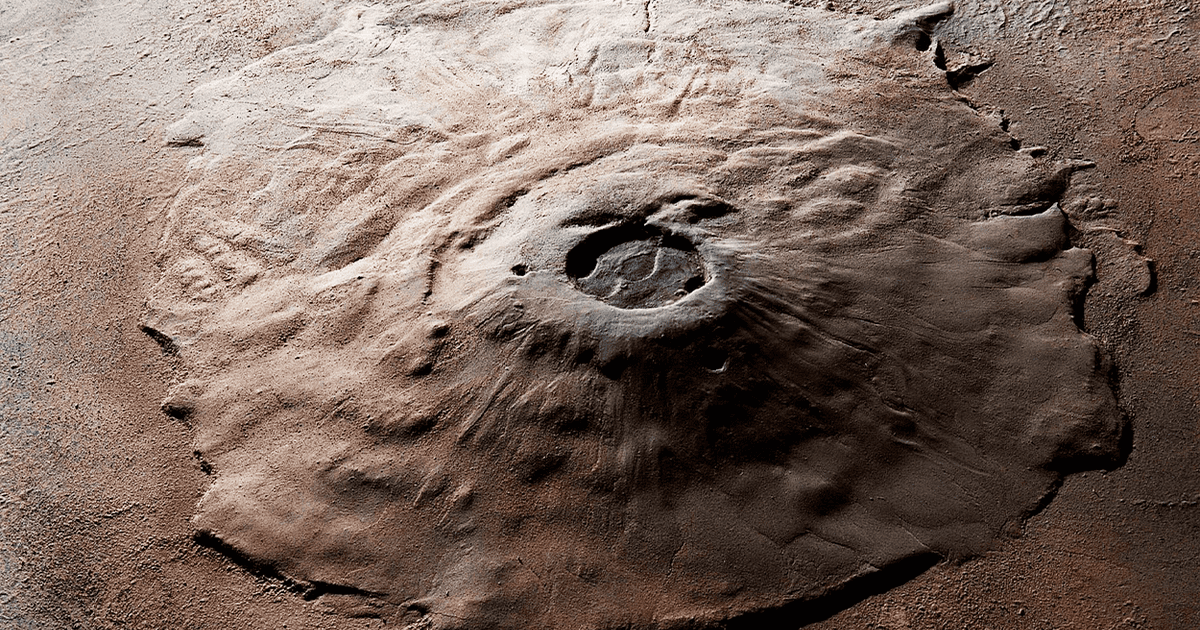No other mountain in the solar system can exceed the height of this volcano on Mars. Photo: National Geographic
Mars presents events that challenge our understanding of the natural world in our relentless exploration of the universe. One of these Volcano Bigger than Everest, its size amazes scientists and hobbyists alike. With that height Three times the height of the highest peak on EarthThis Martian colossus redefines the limits of 'high', but raises questions about the geology and volcanic past of our solar system beyond what we know.
Above The HimalayasOn the vast and mysterious surface of Mars, stands a titan that defies human imagination. This giant There is no rival in the solar system And exceeding the dimensions very badly Everest And this K2. The existence of such a geological wonder outside our planet underscores humanity's importance in considering the scale of the universe and highlights the importance of space exploration in our quest to understand our place in the cosmos.
Which volcano on Mars is three times bigger than Everest?
Olympus Mons, the largest volcano Everest, Creates a record for it A height of more than 21 kmBut also because of its fundamental nature, which includes a comparable area America. Its imposing presence on the Tharsis Plateau reflects a past marked by intense volcanic activity, with no tectonic limits controlling the growth of mountains on Earth.
Height difference between Everest, Mauna Kea and Mount Olympus. Photo: Flashes
When did Mount Olympus rise and how was it formed?
with height About 25 kilometers and about 600 kilometers in diameterOlympus Mons exceeds the dimensions of any terrestrial mountain, including Mauna Kea, which competes for the title even from its underwater location.
This colossus was created The accumulation of lava over millions of yearsIt allowed it to reach its impressive size without the intervention of tectonic plates. Located in the Tharsis region, this volcano has been studied by NASA missions and has provided valuable information about the geology of 'Mars'.
Satellite view of Mount Olympus. Photo: CNN
What other large volcanoes are there on Mars?
In addition Olympus MonsHome of other lords like Mars Mount Ascraeus, Pavonis Mons and Arcia Mons, which forms the Tharsis Volcanic Complex. Each presents unique characteristics that contribute to understanding the Martian volcanic landscape. These formations suggest that Mars had significant volcanic activity, perhaps comparable to Earth in its early stages.
Some of the largest volcanoes on Mars are: Olympus Mons, Tharsis Plateau, Noctis Labyrinth, and Vals Marineris. Photo: SVS/CNN
Which other volcano has just been discovered on Mars?
Recently, researchers have identified a previously unknown volcanic formation in the region Noctis labyrinthus. This invention led by Dr. Pascal Lee, indicates the existence of a volcano that, although eroded, may be as prominent as Everest. The discovery underscores Mars' dynamic nature and yet-to-be-discovered geography.
A view of a new volcano discovered on Mars, which will dwarf Mount Everest. Photo: National Geographic
What does NASA say about volcanoes on Mars?
NASA, through missions such as Mars Express and orbital probes, confirmed its existence The latest volcano erupts on Olympus Mons and indicated that there may be volcanic activity. This interest is due to a fascination with the dimensions of these volcanoes, and what they reveal about the geological history of Mars and the existence of past or present life on the Red Planet.
Schematic of a section of The Tharsis Rise: Noctis Labyrinths, suspected unconsolidated volcanic caldera, relict glacier and Vals Marineris, respectively. Photo: CNN/USGS
The highest mountain on Earth, surpassing Everest by nearly 2,000 meters, is in the United States.
Located in the heart of Mauna Kea HawaiiAmerica, Everest by nearly 2,000 meters When measured from its bottom to its top (10,205 meters) Although Mauna Kea's summit is no more than 4,200 meters above sea level, its true size lies in its extensive journey from the depths of the Pacific. An inactive volcano, this mountain is the result of the geological processes that shape our world, but it also stands as a pillar for astronomical observation, thanks to its clean atmosphere and clear skies.





